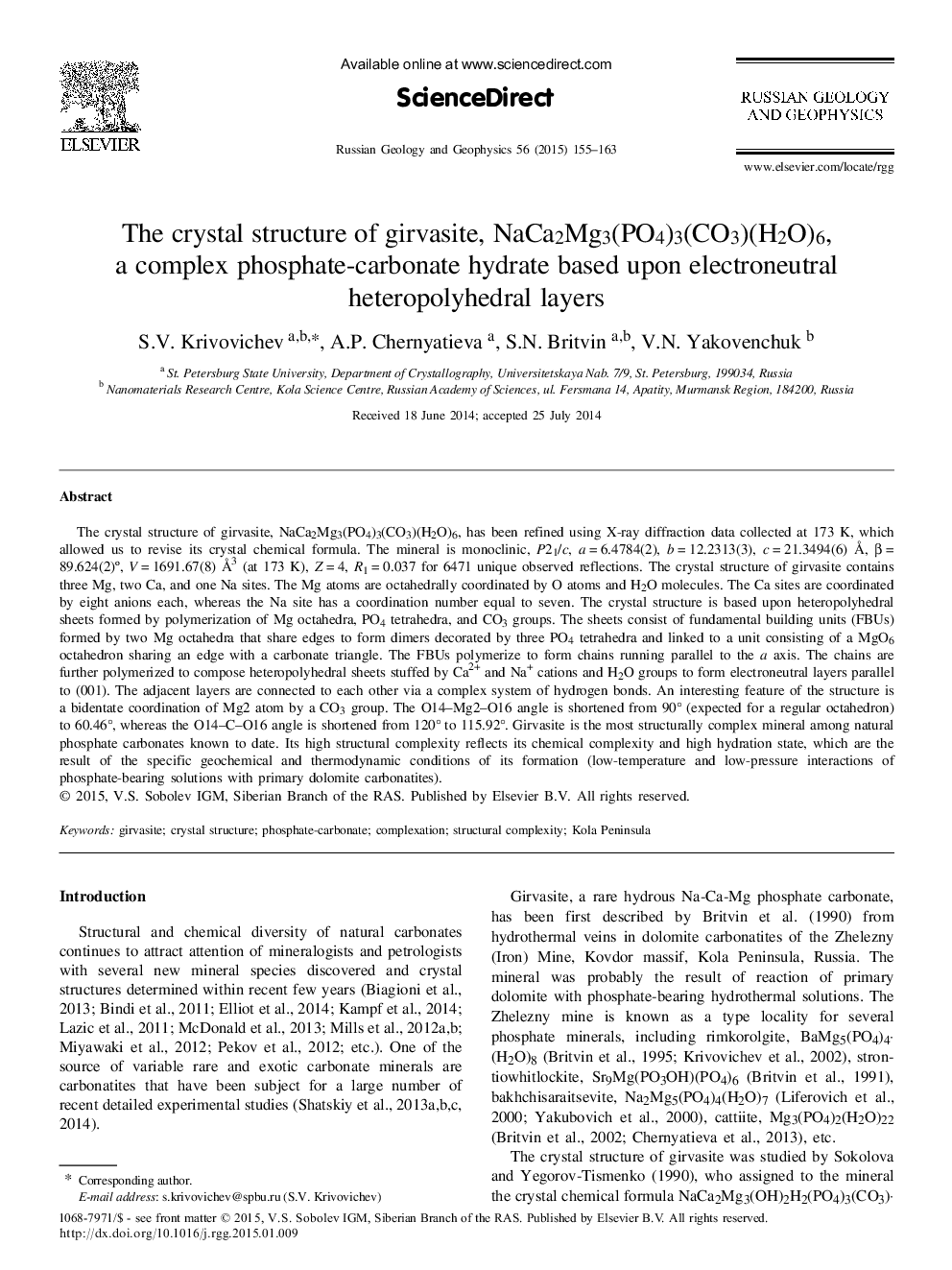| Article ID | Journal | Published Year | Pages | File Type |
|---|---|---|---|---|
| 4738446 | Russian Geology and Geophysics | 2015 | 9 Pages |
The crystal structure of girvasite, NaCa2Mg3(PO4)3(CO3)(H2O)6, has been refined using X-ray diffraction data collected at 173 K, which allowed us to revise its crystal chemical formula. The mineral is monoclinic, P21/c, a = 6.4784(2), b = 12.2313(3), c = 21.3494(6) A, p = 89.624(2)°, V = 1691.67(8) A3 (at 173 K), Z = 4, R1 = 0.037 for 6471 unique observed reflections. The crystal structure of girvasite contains three Mg, two Ca, and one Na sites. The Mg atoms are octahedrally coordinated by O atoms and H2O molecules. The Ca sites are coordinated by eight anions each, whereas the Na site has a coordination number equal to seven. The crystal structure is based upon heteropolyhedral sheets formed by polymerization of Mg octahedra, PO4 tetrahedra, and CO3 groups. The sheets consist of fundamental building units (FBUs) formed by two Mg octahedra that share edges to form dimers decorated by three PO4 tetrahedra and linked to a unit consisting of a MgO6 octahedron sharing an edge with a carbonate triangle. The FBUs polymerize to form chains running parallel to the a axis. The chains are further polymerized to compose heteropolyhedral sheets stuffed by Ca2+ and Na + cations and H2O groups to form electroneutral layers parallel to (001). The adjacent layers are connected to each other via a complex system of hydrogen bonds. An interesting feature of the structure is a bidentate coordination of Mg2 atom by a CO3 group. The O14-Mg2-O16 angle is shortened from 90° (expected for a regular octahedron) to 60.46°, whereas the O14-C-O16 angle is shortened from 120° to 115.92°. Girvasite is the most structurally complex mineral among natural phosphate carbonates known to date. Its high structural complexity reflects its chemical complexity and high hydration state, which are the result of the specific geochemical and thermodynamic conditions of its formation (low-temperature and low-pressure interactions of phosphate-bearing solutions with primary dolomite carbonatites).
